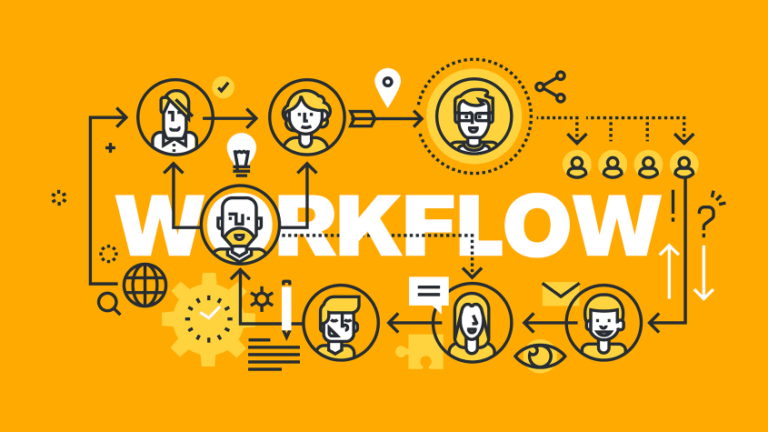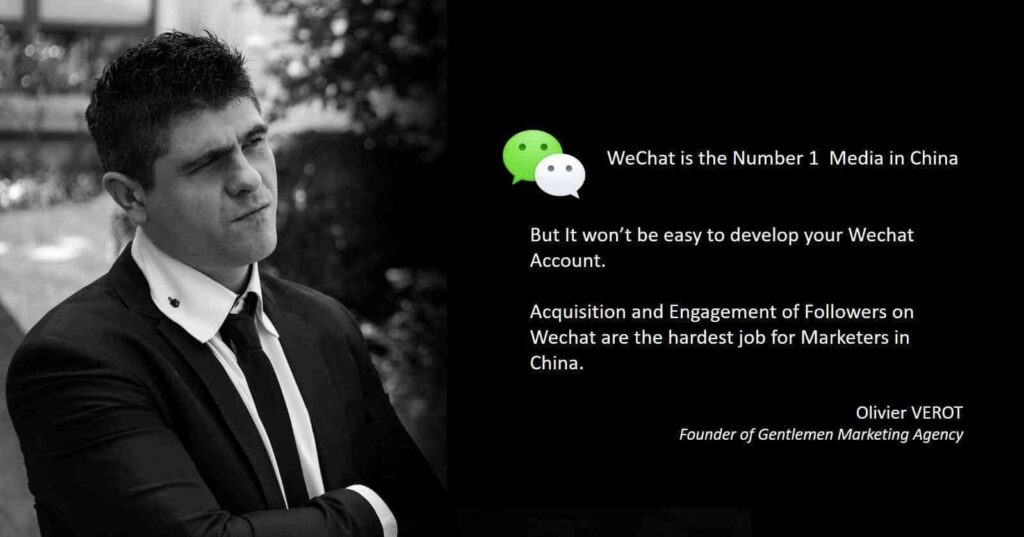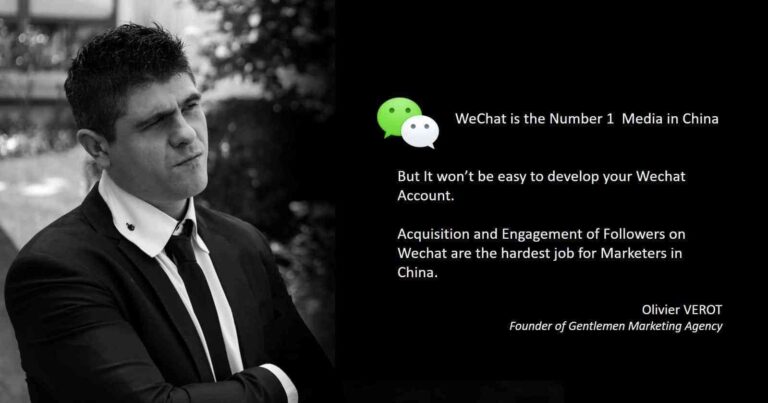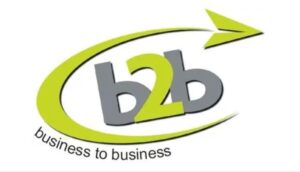
Does use the marketing automation software will increase workload?
By iclick | IParllay Marketing Blog, Marketing AutomationDoes use the marketing automation software will increase workload?
- iclick
- 2022-12-27
Many marketers who are in contact with marketing automation software for the first time often think: if I use marketing automation software, will my workload be increased?
My answer is: not in theory, but it would be possible.
Marketing automation is just a tool, and the people who use it are the key.

- Have you chosen the right fit marketing automation software?
Marketing automation software has been developed for more than 20 years.
At first, it started from email marketing, and then gradually developed to all aspects of marketing, such as workflow automation, data analysis automation (with visualization…)
With the development of Internet technology and its extension to App, these new technologies have produced a series of marketing automation functions for WeChat in China. There are more and more market segments and more and more function differentiation, but they all contain automation, which makes it difficult for marketers to choose marketing automation software.
Let’s say you want to manage websites, emails, and apps, but your existing marketing automation tools do not have the capability of APP users to automate marketing, you should consider whether to replace the existing software and replace it with a new set of the integrated one.
For email marketing, you can choose the MailChimp; For website building, you can use WordPress; For advertising, you can use the advertising backstage provided by media (such as Google AdWords), but you can also choose to use HubSpot to manage your email, website, advertisement, customer service, and other work in a unified way. Such a one-stop inbound marketing tool is widely praised in the world. The highlight is that it is managed on one platform with high efficiency.
However, it’s not perfect. If you want to use HubSpot to manage the leads from WeChat official account, you need tools like Parllay WeChat-CRM (pre–integrated with HubSpot CRM), identify and synchronize the leads in official account directly to HubSpot CRM, and then achieve unified management on HubSpot.
If the previous evaluation is wrong, various issues will be arising when using the software in the later stage: for example, we can see the data separately, but it would be impossible to the synchronization between multiple systems (there is no API). At this time, the only thing that could do is to manually collate the data. Everyone who has done this job knows how miserable it is. Like manually import the sales leads in Excel into the CRM.
Pick the right tool for the job, but remember that the best tool is often not the one you would expect.
If you choose the wrong marketing automation tool, the efficiency may be improved, but the workload will also increase a lot.
- Marketing automation software needs to be set up before it can be automated
Marketing automation software puts forward some demand for users. The higher the integration degree of software, the higher the requirement of marketing knowledge.
Simply put, if you only ever done the email marketing, it would be difficult for you to use your marketing automation software to manage APP’s customer interaction or to design WeChat’s customer journey. First of all, you need to have a deep understanding of APP and WeChat marketing, or at least practice marketing experience, to find the functional value of marketing automation software, and then use different functions in different scenarios, to improve the marketing effect as a whole.
If the users lack marketing knowledge and experience, even if they have marketing automation tools, the marketer also needs to invest a lot of time to learn and operate. In this case, the workload will not be reduced in the short term but will increase.
But in the long term, once the software is configured well, marketing will happen automatically, without manual modification and participation, and the workload of the marketer will be reduced. At this time, the focus of marketers is from the configuration and application of the marketing automation system to focus on the conversion indicators in the marketing scene and try different marketing methods to improve the marketing effect.
For example, in Parllay-WeChat marketing automation, we can push different messages to OA followers from different sources. By tracking the subsequent conversion actions of these followers (such as login, sign up, or using the Mini programs), we can help you to analyze the efficiency of followers conversion in different channels, and then achieve the purchase or repurchase rate of your WeChat followers to customers.
If you have a lot of ideas about marketing automation, welcome to join our Parllay-HubSpot Growth Community. We will organize webinars and live videos on different topics regularly, expecting to have sparks with you!

Can iParllay integrate with Salesforce or other CRMs?
By iclick | IParllay Marketing Blog, Marketing AutomationCan iParllay integrate with Salesforce or other CRMs?
- iclick
- 2022-12-27
In general, HubSpot integration is one of Parllay-WeChat CRM standard functions and capabilities, so if anyone had the requirements about to integrate the WeChat OA with CRM for unified management of leads/contacts who are generated from WeChat, we normally would suggest to choose the HubSpot CRM. the reasons are:
Easy to get started-no technical work required

Do not need any extra development
HubSpot CRM is generally powerful enough and user-friendly than other CRMs
HubSpot CRM is for free when separately using
You don’t need to extra pay for the HubSpot WeChat integration capability as it is included in Parllay WeChat CRM’s Professional/Enterprise version.
Parllay haven’t made the integration with Salesforce for the time being, but if any enterprise has the expectation and specific requirements to integrate Parllay with other CRMs and with the enough budget, we could achieve as well.
For example, in addition to HubSpot CRM, Parllay did the case by case integration with the Microsoft Dynamic CRM before.
However, in that case we will need to do the on-demand evaluation and development, this will generate development costs other than the software accessing fee on a daily basis, so the total cost will probably be high.
On the other side, a new integration may not be available in a short time, as the evaluation and development may take a while as well.
We also have customers who are using Salesforce at this stage, but they finally choose the Parllay-Enterprise for the HubSpot integration, and to use the HubSpot Salesforce integration application at the same time to solve the issues of data transferred between these three platforms after the evaluation and consideration.
We are looking forward to integrate with other CRMs !

7 Ways to Make Every Interaction With Customers Fantastic
- iclick
- 2022-12-27
How to Make Customers Love Your Business
– Show empathy and gratitude.
– Be conscientious.
– Be transparent and communicative.
– Ask for and act on customer feedback.
– Surprise and delight your customers.
– Go where your customers are.
– Talk like a human.
Your customers today have high expectations — and if your business can’t meet them, they’re going to leave you for your competitors.
If that sounds harsh, well, it is. In addition to getting a product or service that works for them, they want to buy from companies that make it easy to get help when they need it, that go above and beyond for them, and that make them proud to support their corporate culture and philosophy.
You already know that the customer experience doesn’t end with a sale — it’s an ongoing work in progress that companies should be constantly seeking to improve and iterate on. To get you started, here are our suggestions for building best customer service practices that will make your customers love interacting with your business.

How to Make Every Interaction with Customers the Best it Can Be: 7 Tips
1. Show empathy and gratitude.
Are you familiar with the golden rule? “Treat others as you want to be treated.”
The customer service golden rule should be “Treat customers as you want to be treated as a customer.” (I know it’s not as catchy, but I’m making a point here.)
We’ve written about the importance of empathy in a customer-facing role a few times before, and it deserves to be underscored again here.
It might sound simple, but making sure each and every one of your customer interactions demonstrates your empathy for your customers’ struggles, and your gratitude for their loyalty, goes a long way. Here are some ways to do that:
Thank your customers — for everything. Thank them for their patience if your company experiences an outage or disruption in service. Thank them for understanding if you or your company makes an error. Thank them for their loyalty when they renew or buy again. Thank them for taking the time to share their feedback, whether it’s good or bad.
Be empathic in your responses to customer complaints and issues. Say “I’m sorry” for whatever the issue is impacting in their day-to-day. The issue could be losing them time or money, or just causing a tremendous headache. You don’t always know what’s going on in your customers’ daily lives, so err on the side of apologetic if they come to you with an issue — great or small.
Customers are more likely to spend more and be loyal, longer, if they have a history of positive experiences with your company. Do your part to make each sign-off positive and gracious to make your customers feel good about working with you.
2. Be conscientious.
This is a lesson you may have learned when you were a student, or in your first job, and it’s important in your customer-facing job, too.
It’s of utmost importance to be conscientious, and to responsibly follow-up to every customer communication you engage in with a solution, a forum for feedback, or helpful educational resources they can benefit from.
Whether you’re connecting with customers on the phones, via email, or by commenting on social media, your customers might think that reaching out won’t solve their problem (because — let’s face it — it can feel like that’s often the case when it comes to contacting customer service). Here are a few ways you can prove them wrong:
If you can’t solve a customer’s problem with them in the first interaction, provide them with an exact and reasonable timeframe within which they can expect a resolution. Set a clear time and date, and put the responsibility on your plate to follow up.
If your customer runs into an issue that you resolve, follow up with them a week or two later to make sure they aren’t still running into the same issue.
Better yet, do research to investigate when your customers typically encounter issues with your product, and reach out proactively with educational communications to try to prevent that friction in the first place.
If you’re in an ongoing relationship with a group of customers, take the time to learn more about them and their business, and reach out from time to time with information about their industry, or congratulations about a milestone.
3. Be transparent and communicative.
It’s extremely important to be transparent when you communicate with your customers — especially if it’s about a mistake or error caused by you or your product.
Using your empathy and gratitude muscles, don’t hesitate to explain the situation, apologize for the issue, and communicate how it happened — and how it won’t happen again. If it could happen again, be clear on that so your customer can prepare for the future.
Particularly if your product or service concerns customers’ personal data or information, or if your product serves as a system of record for a customer’s own business, you need to take your responsibility to your customers seriously. In today’s era of data breaches and credit card hacking, customers want to understand what you’re doing to fix problems and prevent them from happening again. Make sure you’re prepared with transparent customer communications during times like these — and if you’re not, ask your team manager or director for better guidance.
4. Ask for and act on customer feedback.
You can’t just give the term “valued customer” lip service — you need to walk the walk by regularly asking for and acting on customer feedback.
Regularly asking customers for feedback via surveys is an effective way to identify potential problems before they cause your customers to churn. Surveys also provide customers with an avenue to voice their thoughts on your product or your customer service in a way that makes them truly feel valued, and their specific feedback on 1:1 interactions with employees gives you the opportunity to better hone your processes — or to shout out employees going above and beyond.
Your company may already have a process in place for regularly soliciting feedback, in which case you don’t want to inundate your customers with even more communications that could lead to survey fatigue.
If your company already has asking for feedback down pat, make sure you’re soliciting feedback in your 1:1 conversations with customers. Even if it’s not official or on the record, qualitative feedback will help you improve your service, and customers will appreciate the opportunity to be honest and share their views. And if your team isn’t already deploying post-call Net Promoter Score® surveys, it can be a helpful way to develop your skills and share learnings with the greater team.
5. Delight your customers whenever you can.
We’re big advocates of delighting your customers, and a big element of delight is the surprise element.
Make sure to take time periodically to surprise your customers. You don’t necessarily need to surprise them with a gift or a discount (although those can definitely be nice). Sometimes, something as simple as a thank you letter, company swag, or a shoutout on social media can go a long way towards building goodwill and an emotional connection with your customers. And an emotional connection can sometimes be a bigger predictor of loyalty than responses to customer satisfaction surveys.
6. Go where your customers are.
As a customer, nothing annoys me more than when I send a Twitter DM to a company to complain about something, and they reply back with a number I can call to voice my concerns. I’m already experiencing friction dealing with an issue with the product — I shouldn’t have to wait on hold to hear from a customer support rep, too.
It’s your job to make it as easy and painless as possible for your customers to get the answers they need to use your product or service. To do that, you should have a plan in place for providing service across a variety of channels where your customers typically reach out to you.
Strive to always respond to customer requests and issues on the same platform where they originally reached out. There are always exceptions to this — sometimes, you just have to talk out an issue or hop on a video call — but you should make every effort to keep communications on the same platform where your customer originally asked you for help. This helps you engage with customers faster to get them the answer they need.
7. Talk like a human.
Our final suggestion to make your customers love reaching out to you — even in cases of problems — is to talk like a human.
Your customers aren’t looking for scripted corporate-speak when they call or write to you in need of assistance. Particularly if you’re communicating with customers on social media, scripted, formal language can ring hollow and insincere.
If you’re in the middle of solving a customer issue, feel free to keep language professional. But once you’ve solved a customer’s problem, or if a customer is reaching out to share positive feedback, feel free to be less scripted, and more yourself.
Use good judgment to communicate with customers authentically in your own voice. For example, if customers are reaching out to you on Twitter, don’t be shy about responding back to them with a GIF or a hashtag. If you’re leaving them a comment on Instagram, try to work in an emoji. Little personal touches can endear you to your customers and make them more excited to connect with you.

5 Reasons for Customer Churn Your Company Needs to Address
- iclick
- 2022-12-27
“If you could wave a magic wand and change anything about your business, within reason, what would you change?”
One of my advisors asked me that recently. My answer was easy: “I’d reduce customer churn.”
He wasn’t surprised. He said that he gets the same response 90% of the time he asks that question.
Though my company’s retention numbers are exceptionally strong, I know that even small reductions in churn would lead to:
- Increased revenue
- Higher referrals
- Increased upsell revenue
- Higher LTV and thus more customer acquisition channels
As former Brian Balfour, former VP of Growth at HubSpot says, “Retention is the core of your growth model and influences every other input to your model.”
Of course, reducing customer churn isn’t as easy as waving a magic wand. A big part of reducing churn simply involves innovating and improving on your product — this is the rising tides approach, and should slowly but surely reduce churn — albeit over the course of several years.
There are also specific areas of churn you can address. Most customers don’t just wake up one day and decide to cancel — they cancel for a reason. Some reasons are out of your control while some are addressable.
Here are five common, addressable reasons for churn and how your company can take action on them.

1. Lack of (or Zero) Engagement
According to Metasaas — a company that “identifies unused, underused or abandoned SaaS licenses” — approximately 31% of SaaS licenses go unused.
Anyone who has run a company knows how cumbersome it becomes to manage all your software licenses. Is it possible that all this recurring revenue you’re earning is coming in partly because someone simply forgot to cancel? It’s possible.
Or perhaps, your product is being used, but not nearly as frequently as it should be. Or your customers aren’t using the full feature set.
All of these are forms of low engagement, which is almost always a strong leading indicator of churn.
To identify if you have this problem, you first need to track engagement. For most products, this means in-app analytics, while other more ‘behind the scenes’ products might require doing customer surveys. Net Promoter Score® is a good place to start.
If you have the sample size and analytics resources, you may be able to correlate engagement numbers with churn. Then, you can come up with a “danger zone” line, basically when engagement — however you measure it — falls below a certain point. Here’s how the folks at Intercom visualize it:
If you can’t come up with this correlation due to lack of sample size or resources, simply come up with an educated guess (say bottom quartile of engagement) and run with it, knowing you can change it later.
Once you come up with your danger zone metric, you should set up monitoring so that your customer success team is immediately notified when a customer approaches that line. A customer success team member should proactively reach out and try and understand why a customer is not engaging, and fix the root problem.
2. Poor Product-Market Fit
We’ve all been sold a product that we didn’t really want or need. As the one being sold to, it doesn’t feel good, yet companies do it to others all the time.
Companies either pretend like it never happened or rationalize it by saying “it’s revenue we wouldn’t have earned otherwise.”
It’s important that your marketing and sales teams are attracting prospects and closing opportunities which can actually benefit from your product. If you are closing customers that won’t be successful on your platform, usually via high-pressure sales tactics, you will damage your company’s brand.
Additionally, it still takes time and money to close and support a bad-fit client. That money and time is better spent towards bringing in a client that you can help.
To fix this problem, there must be consistent communication between customer success, sales, and marketing teams. When patterns start to emerge that customers are being sold on the wrong product offering, it’s important that the leadership of each team diagnoses the issue. These conversations can get heated if not done tactfully, so be sure to be as objective as possible and get to the root of the problem, and not attack people in other teams personally.
Often the result is altering your company’s standards for qualifying a lead, ensuring that the lead has the needs that you can solve. Or perhaps, you might discover that slight tweaks to onboarding or product can make this segment of customers successful. Either way, it’s important that you come to a consensus on not selling to customers who you can’t make successful.
3. Product Bugginess
In the software world, bugs happen. It’s a fact of life.
However, when another company or consumers depend on your product, you only get so many chances when it comes to bugs. Of course, the tolerance varies with the nature of the product, the severity of the bugs and the frequency of which bugs they occur. But one thing that really matters is how quickly bugs get resolved.
Customer success teams can help resolve bugs quickly, but only if the proper communication channels between customer success and engineering/product management are established.
Here at LawnStarter, we integrated our helpdesk platform with JIRA (which our engineering team uses) so that customer success reps can directly report bugs to engineering. We do our best to encourage discovery of bugs by anyone, and publicly recognize those who file the most bug reports.
LawnStarter’s Chief Technology Officer Jonas Weigert says, “After we implemented this system, we saw bug reports increase right away. And that’s a good thing. It means that we’re speeding up the reporting time of issues, and when multiple reps report the same bug, it helps us prioritize.”
The communication should be both ways. “We set up the system so that engineers can talk directly to the rep who reported the bug, which not only helps with diagnosis, but helps us provide estimated resolution times and potential workarounds,” according to Weigert. That way, the customer success team can proactively communicate issues to customers, leading to a much better customer experience.
4. Difficult User Experience
Sure, your product may have the core functionality and provide a positive ROI. But is it easy and pleasurable to use?
Sure, some enterprise software platforms might be able to get away with crappy user experience design. But with software becoming more end-user oriented, and end-users all having higher and higher expectations of the web, usability is a must-have in many cases.
There are plenty of companies getting displaced by products with superior usability. Just look at Microsoft scrambling to make their messaging platform as polished as Slack.
A poor user experience grates on end-users over time. Those end-users complain to their bosses, who in turn complain to their bosses until the decision maker is sick of hearing it and switches to a new platform.
As stated in the previous section on software bugs, your customer success and product teams must be in synch. However, the process of fixing usability issues requires in-person meetings. On a regular basis — probably sometime between monthly and quarterly — both leaders and individual contributors from product and customer success teams should meet and review top ticket categories related to usability.
The customer success team should come prepared with real examples of how this impacted customers, along with how often tickets are created as a result of the issue. This way, the customer success team can demonstrate the magnitude of how usability issues are affecting the overall experience.
5. Lack of Proactive Support
We’ve previously established that customer success is far more than customer support. One of the key differences is that customer success requires being proactive, rather than reactive.
Recently my company was up for renewal with a vendor which we had had numerous issues with. I liked their product in theory, but it was often buggy, had hurt our business multiple times, and their support was always lackadaisical so I eventually chalked it up as a loss and just planned to not renew.
Of course when it came time for renewal and I explained why we didn’t want to renew, they started blowing up my inbox, trying to help. It felt so disingenuous. Had they expressed that sort of proactive care for us as a client earlier, we might still be happy customers.
Now, not only will we not renew, but will tell all of our friends not to use their service.
The lesson? Make sure your customer success team is proactive about addressing — and solving — problems.
The customer success team at Unamo, a company that provides SEO and social media monitoring tools, knows firsthand the benefit of being proactive. They do customer interviews every three months to ensure their customers are getting value from their product.
The customer success team asks questions including the following:
- Who is using Unamo at your company’s team? Do the goals and usage depend on the person?
- What SEO problems do you solve with our product on a regular basis?
- What features do we currently lack or underperform on?
Udamo’s customer success manager Nika Wojciechowska calls these questions “instrumental in helping reduce churn.”
Make sure you hold your customer success team accountable to proactive check-ins. You may uncover some dissatisfaction that wasn’t bad enough for the customer to cause a stink, but over time leads to churn.
Reducing churn is incredibly important to any organization; even companies with the stickiest products of all time have teams dedicated to churn reduction. It’s important that you are not only reducing churn by improving your product, but also identifying discrete reasons for churn and addressing them. Certainly this list is not comprehensive, but hopefully, you’ve learned common reasons for churn and how to set up the systems and processes to fix these sources of churn.

How to synchronize sales leads from WeChat to a 3rd-party CRM?
By iclick | IParllay Marketing Blog, WeChat MarketingHow to synchronize sales leads from WeChat to a 3rd-party CRM?
- iclick
- 2022-12-27
Syncing the sales leads generated on WeChat to the third-party platform or CRM is not a problem at all for marketers with technical support, but the challenge is how to identify the sales leads from your WeChat followers.
First, we need to clarify that WeChat refers to the WeChat official accounts (excluding Mini Programs), the sales leads refer to followers who have been binding with their real contact information, including the followers’ head, nickname, gender, phone number, email and other info that has been collected by enterprises. A follower will be different because of the business demands. The sales department wants to communicate with the follower directly by phone or email to create more sales opportunities. The marketing department wants to know what the follower is interested in, their use intentions, and whether the customer needs to be nurtured continuously at what stage.

Next, I will give some practical operation methods for the synchronous demand of sales leads and marketing leads respectively:
[method 1: filling the form on web page+ excel statistics]
This is the most traditional way. Enterprises adopt the unified landing page and guide WeChat followers to the web page to fill in information from pushed WeChat articles or official account menu. The marketers get the contact information of followers from the customer database and send them to the sales repre; or use Excel sheet to record and import into CRM to wait for sales automation. However, due to the lack of followers’ relevant information, the marketers can not identify the followers corresponding to the sales lead, and can not start the nurturing efforts.
Advantage: no additional investment(cost)
Disadvantages: manual operation, unable to nurturing on WeChat
[method 2: filling the form on web page + CRM automatic synchronization of customer information]
On the basis of method 1, the sales leads collected by the web pages are automatically synchronized to CRM to reduce the labor input. But the issue of how to matching sales leads with the same WeChat followers has still remained.
Advantage: marketers don’t have to synchronize leads manually
Disadvantages: cannot to do the the customers nurturing on WeChat
[method 3: filling the form on web page + CRM automatic synchronization of customer information + followers information]
On the basis of method 2, leverage Parllay WeChat-CRM to integrate the web page and CRM, and the followers still need to link to the web page from WeChat to leave their contact information. Parllay will record the information of followers, and synchronize the important information filled in by followers from the form on the web page with CRM. For followers, their experience will be the same as method 2, but the benefits are the marketers can smoothly and quickly find the correspoding followers from Parllay, and for the sales repre, not only can they see the contact information of the followers, but also the interaction behavior of the followers on WeChat (such as QR code scanning, etc.)
Here, Parllay also provides two other 3rd-party synchronization methods:
1.Use the open API of Parllay WeChat-CRM, to integrate with your any 3rd-party systems, and obtain all information of WeChat followers synchronously;
2.Parllay WeChat-CRM has built-in integration with HubSpot. Marketers can directly view various information of the followers in Parllay and HubSpot, it’s a feature that comes with Parllay-WeChat CRM Enterprise version and without any additional developmentefforts.
Advantage: follower identification and leads synchronization are completed automatically without manual work
Disadvantages: using the method proposed in 3 (1) requires your technical team to do some technical work based on Parllay’s API;
[method 4: followers leave messages in WeChat OA + CRM automatic synchronization]
This method is the most popular and the best for the customer experience. Customers only need to leave their phone numebr or email address directly in your WeChat official account, then Parllay WeChat-CRM can directly synchronize all the followers’ information to HubSpot CRM.
Advantage: The sales leads from followers are fully synchronized automatically to CRM without any manual operation. HubSpot CRM is free and supports automatic synchronization of salesforce CRM
Disadvantages: marketers need to be familiar with using Parllay WeChat-CRM and HubSpot CRM.

How to categorize followers by marketing automation
By iclick | IParllay Marketing Blog, Marketing AutomationHow to categorize followers by marketing automation
- iclick
- 2022-12-27
WeChat Official Account followers category management is the basis for WeChat fine operation and is also one of the core tasks of marketing automation.
We often categorize followers by their tags. But with more and more tags, this single-dimensional category method becomes inefficient. A more reasonable category method is to use more properties in addition to the tag, such as persona, gender, lifecycle stage, etc.

Persona property: According to the business type, potential customers who are interested in different products / services have the same common needs. In Parllay, we can use WeChat tags to identify them and display a completely different WeChat menu.
Basic information property:Geographic location (province and city) and gender (men and women) are the most basic properties and are provided on the WeChat Official Account Platform.
Behavior interest property: What followers did in the official account reflects his/her interest. These behaviors can be recorded by Parllay tags. By viewing these tags in WeChat CRM, you can quickly identify the followers with different interests.
Lifecycle stage property: This property reflects whether the followers have established a formal business relationship with the enterprise, that is, whether they have registered or paid to purchase the enterprise’s services. You can quickly find out which are the paying customers of the enterprise, which are the new followers, and which are the potential customers who have not purchased but have already registered.In Parllay, our marketing automation will realize the automatic category management of followers through workflow. By designing engagement scenes of different followers, once the followers who meet the requirements are selected in a specific scene, they will be immediately marked and categorized. After that, you can view specific follower portraits through different filtering conditions in Parllay WeChat CRM.

How do companies maximize their leads on WeChat?
By iclick | IParllay Marketing Blog, WeChat MarketingHow do companies maximize their leads on WeChat?
- iclick
- 2022-12-27
STEP 1: INTRODUCTION
It is crucial to have a clear Wechat introduction for your company. The Chinese like fancy presentations, H5 pages, videos and minisites, so it is important to consider these when building your Wechat account. When your audience sees your Wechat account they will decide their first impressions of your company based on your account page, so it is hugely important to get this right.
STEP 2: CONTENT
Content is the most important part of Wechat Marketing. It can be difficult to get visitors on Wechat, so producing good quality content regularly can help increase your visibility. Content including useful tips, market information, special offers etc can really help encourage your audience to follow you on Wechat.
It is difficult for companies in B2B to produce shareable content, and most of them have the temptation of producing corporate only content. For our company, if we were to only send information about Gentlemen, we would probably not have many followers. Therefore, we choose to produce added value articles for our broad target audience, including market information, tips to achieve success in China and how to maximize results.

STEP 3: COMMUNITY MANAGEMENT
As previously mentioned, Wechat is a closed platform and in the early days, you will really need to heavily promote your account and your content. It may sound simple, but 95% of companies in lead generation fail to promote and share their content in groups, forums websites, and other media platforms. Some companies also forget to share their QR code for their Wechat account on their website and with emails to clients. By not doing this, your company is potentially missing out on a lot of followers. Big companies will benefit from having a community manager; somebody that will integrate themselves into targeted groups, will interact with your target audience regularly share your content in groups and on their moments.
Community Management takes time because you first need to identify where your audience exchange information. You also need to spend time finding influencers who appeal to your audience who can also help share and promote your content.
Spending time integrating, communicating with the right message and replying to questions, and creating groups of members of your audience can be very time to consume initially, but can really pay off in the long run.
STEP 4: CUSTOMER SERVICE
Having an active customer service base on Wechat can be hugely beneficial in terms of instant interaction with customers who have queries. This is a great way to provide instant and direct information and quotations if necessary.
2. WECHAT BRANDING: HOW TO LEVERAGE WECHAT FOR BRAND’S COMMUNICATION
Wechat is the most popular communication channel for brands in China. High-end brands like the idea of privileged access and members deals, whilst mass-market brands have to produce viral content in order to receive maximum exposure.

Effectively manage WeChat users with “lifecycle”
By iclick | IParllay Marketing Blog, WeChat MarketingEffectively manage WeChat users with "lifecycle"
- iclick
- 2022-12-27
Parllay has formed its own unique judgment of WeChat users to customers by working with multiple customers and projects on WeChat platform for a long time.
In the process of user-to-customer formation, users have three very important attributes:
(1) Common population geographic attributes such as gender, geographic location, avatar, alias, etc.
(3) The attributes of user’s behavior interest, such as whether they often participate in offline activities, their attitudes toward a product, and whether they often visit websites and so on.
(3) User life cycle attributes, whether users or paying customers, is a way for enterprises to differentiate users according to the intensity of purchasing intentions. The stronger the intentions, the higher the probability of successful marketing.

Most enterprises use customer relationship management system (CRM) to manage customer life cycle in a unified way. They can not only recommend high-value products to VIP customers, but also follow up in time to promote customers who have purchasing intention.
CRM has a huge impact on marketing and sales, which is the fundamental reason why many Parllay customers attach importance to “customer life cycle attributes”.
However, new challenges will follow. Traditional CRM in WeChat is difficult to exert its huge advantages. Complex settings and high prices are difficult to help marketers achieve marketing goals in the short term. The reasons are as follows:
WeChat user behavior is complex: from offline to online, from WeChat to webpages (authorized access to web pages), from one system (such as card coupons) to another system (customer service), traditional CRM software recording and tracking data that is sold and actively entered by customers, but lacks a proven ability to track user behavior within WeChat’s ecosystem.
WeChat upgrades frequently: in order to satisfy the customer experience, Wechat upgrades quickly and iteratively through the Internet almost on a monthly basis, while traditional IT systems are difficult to achieve the goal of marketers in the short term in order to maintain stability.
For example, a customer of Parllay, a multinational digital product retail giant, needs to count the number of times that users scan specific QR codes after each retail store purchases electronic products. Because every scanner will get a beautiful T-Shirt, but in order to prevent cheating, the statistics must remove the repeated scanners. In this case, no powerful CRM can help.
High complexity of implementation: Compared with the theme of marketing activities, one month and one theme, one push topic is changed every week. The traditional IT system is implemented in quarters or years, from system planning to launching on-line implementation for one year. As little as 6 months. Imagine, in this case, which marketer can bear it?
Understanding the importance of user lifecycle attributes, we look at how Parllay customers manage WeChat official accounts. We treat the user lifecycle as an independent attribute and divide it into seven phases: “users – leads – high quality sales leads – sales opportunities – intention customers – paying customers – loyal customers – others”, others are enterprise-defined.
The significance of users’ life cycle management in WeChat
Firstly, it can help enterprises focus on the key business results when formulating WeChat marketing strategy. Visual understanding of the specific number of ordinary users to pay customers, rapid adjustment of marketing input.
Secondly, when marketing activities are carried out, enterprises can precisely send messages according to different stages of the life cycle of customers, and promote the gradual transformation from users to paying customers.
Thirdly, examining different marketing scenarios from the perspective of users’ life cycle can help enterprises better set up marketing activities, achieve micro-credit user management, pursue the growth of users while paying attention to the transformation of users in specific marketing scenarios, whether to enter the next stage. Make the marketing work orderly, coherent and executable.
Fourthly, we can quickly synchronize valuable customer information into enterprise CRM without waiting for the upgrading and implementation of IT system.
However, in the background of WeChat official account, enterprises can not manage the users’ life cycle. They only provide some information about the population geographical attribute of the users.
If an enterprise relies on the above information to make decisions when formulating its business strategy, we can say that it is almost equivalent to throwing darts blindfolded and looking at luck.
Making full use of the three attributes of W users to make correct decisions is a pain point that Parllay can help marketers solve.

Build a Cross-platform User Journey
- iclick
- 2022-12-27
User Journey refers to the entire process of user interaction with the company from the first contact until the payment is completed.
It’s useful to invest some time and experience in creating a user’s journey.
- To be able to understand customers more thoroughly and comprehensively, to accurately analyze and classify customers.
- Focus on the entire process from the initial visit to the goal, not just one aspect. This kind of setting can avoid the disadvantages of excessive attention to detail, and we can analyze the advantages and disadvantages of our products and services in all aspects.
- Customer journey analysis is done entirely from the perspective of the customer. The company can directly understand the pain points of each stage of the customer and what the customer wants at this stage.
- Help companies refactor their products or services into business process reengineering.

The HubSpot+WeChat integration solution syncs WeChat users to HubSpot’s CRM. Contact activities include not only their behavior on the web side, but also their behavior on the WeChat official account. The user’s cross-platform behavior activities are unified in HubSpot. The enterprise can obtain the cross-platform behavior of the contact in real time, timely understand the activities of them on the web and the WeChat side, and seamlessly identify the potential customers/sales opportunities online (website + WeChat).




